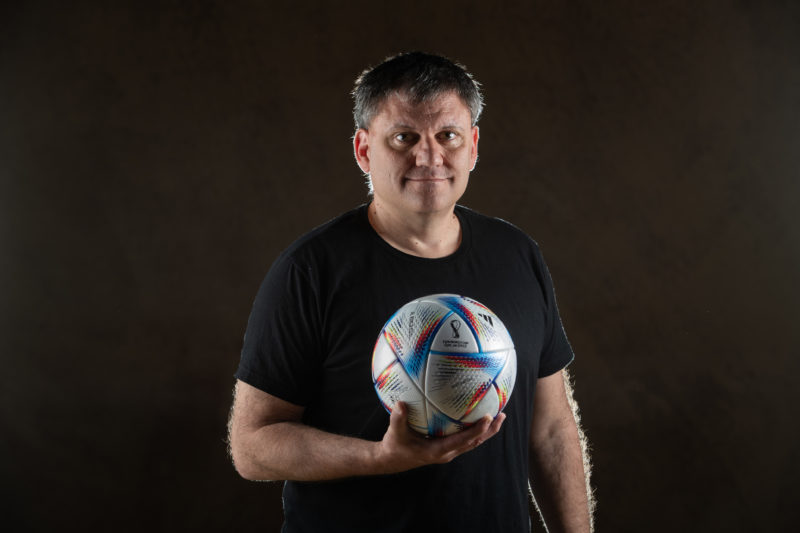
It’s summer, so that means Dr. John Eric Goff, the University of Lynchburg’s go-to guy when it comes to sports physics, is making the rounds in the media. Recently, he’s been talking and writing about the Tour de France and the upcoming FIFA World Cup soccer tournament, to be held in Qatar in November.
Goff, author of “Gold Medal Physics: The Science of Sports,” is frequently interviewed by the media during major sporting events, including the Olympics, Tour de France, and FIFA World Cup.
He also has been interviewed about the physics of baseball, basketball, football, and other sports, and is a regular guest on “Playing with Science,” a podcast on world-famous astrophysicist Neil deGrasse Tyson’s StarTalk radio network.
On July 20, Goff appeared on the streaming news site Cheddar in a segment about the Tour de France, “What the Tour de France Does to a Rider’s Body.” Goff, one of two scientists interviewed for the piece, appears at the beginning and end of the 12-minute video.
On July 11, the journal Breakthrough published Goff’s article, “World Cup soccer ball aerodynamics: How does the Qatar 2022 ball perform?” In the article, Goff also plugs the University, inviting students to study sports science with him at Lynchburg.
On June 30, The Conversation re-published an article by Goff about the Tour de France and how many calories the winner will burn. The article also was translated into French.
In March, Sport Bible featured Goff in an article about a seemingly miraculous penalty shot made by Portuguese soccer star Cristiano Ronaldo.
Currently, Goff and his Virginia Foundation for Independent Colleges summer research assistant, Michael Charecky ’24, are predicting the winning times for each stage of the Tour de France. They are posting their predictions on Goff’s blog and on Facebook.
For years, Goff and his students have used the laws of physics to model the 2,500-mile bike race. Using data about cyclist power and the race’s elevation profile, they try to predict the winning time for each of the race’s 21 stages. Often, their predictions come incredibly close.

